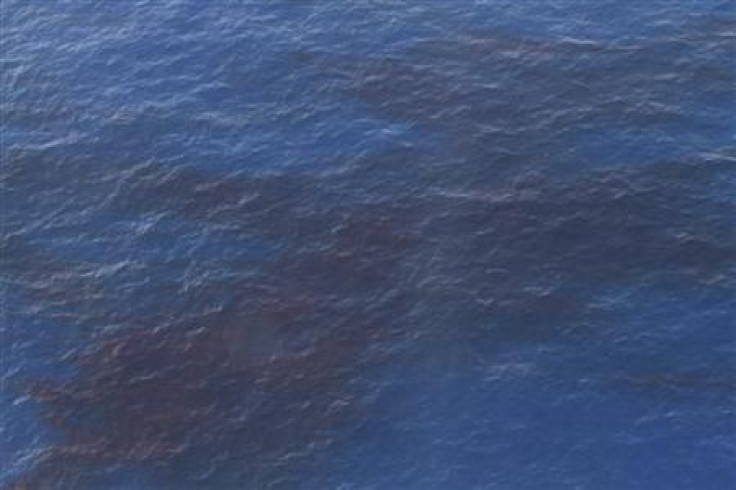Deformed Fish, Eyeless Shrimp Linked To BP Oil Spill, Researcher Says

Researchers and fishermen continue to find deformed sea creatures such as eyeless shrimp, clawless crabs and fish with no gills two years after BP's Deepwater Horizon released 200 million gallons of black goo into the Gulf of Mexico in the nation's worst offshore oil spill on record.
The mutated sea life affects not only the gulf's delicate ecosystem but also the seafood industry, which generates $2.4 billion annually for Louisiana alone.
The fishermen have never seen anything like this, Jim Cowan, an oceanographer at Louisiana State University, told Al Jazeera. And in my 20 years working on red snapper, looking at somewhere between (20,000) and 30,000 fish, I've never seen anything like this either.
BP Plc (NYSE: BP) officials said tests show that gulf seafood is safe and that fish deformities were documented before the oil spill.
Seafood from the Gulf of Mexico is among the most tested in the world, and, according to the (Food and Drug Administration) and the (National Oceanic and Atmospheric Administration), it is as safe now as it was before the accident, BP officials wrote in a statement to Al Jazeera.
The spill occured on April 20, 2010, releasing a gusher that took three months to contain. That November fisherman started reporting they saw fish with sores and lesions, according to Cowan.
Gulf fishermen continue to catch hundreds of pounds of eyeless shrimp, Tracy Kuhns, a Louisiana commercial fisher, told Al Jazeera. Not only are the shrimp eyeless, but they also have no eye sockets either, she said. Fishermen have also reported shrimp with tumors, eyeless fish and fish with no gills.
Some shrimpers are catching these out in the open Gulf, Kuhns said. We are also finding eyeless crabs, crabs with their shells soft instead of hard, full grown crabs that are one-fifth their normal size, clawless crabs, and crabs with shells that don't have their usual spikes. They look like they've been burned off by chemicals.
Environmental researchers blame the oil spill plus the two million gallons of Corexit, the dispersant BP used in an attempt to clean up the spill, Cowan said. The exact effects of the dispersant are unknown and researchers with Corexit's manufacturer Nalco didn't conduct toxicity studies on the product before use.
The dispersants used in BP's draconian experiment contain solvents, Riki Ott, a toxicologist and political activist, told Al Jazeera. Solvents dissolve oil, grease, and rubber. It should be no surprise that solvents are also notoriously toxic to people, something the medical community has long known.
Cleanup crews used Corexit to disperse oil from the 1989 Exxon Valdez oil spill that resulted in people in the area developing respiratory, nervous system, liver, kidney and blood disorders, the Alaska Community Action on Toxics told ProPublica.
Cowan attributes the deformities to polycyclic aromatic hydrocarbons, a pollutant that is present in crude oil, coal and tobacco. Fish exposed to oil and Corexit after the Exxon Valdez spill showed similar symptoms, Cowan said.
What we think is that it's attributable to chronic exposure to PAHs released in the process of weathering of oil on the seafloor, Cowan said. There's no other thing we can use to explain this phenomenon. We've never seen anything like this before.
Prior to the spill, only one-tenth of 1 percent of fish had any growths or sores, according to the National Oceanic and Atmospheric Administration. After the spill, between 2 and 5 percent of gulf fish have skin lesions or sores, according to a report by the University of South Florida.
The oil spill is damaging oysters as well, though the damage isn't as apparent, according to the National Resources Defense Council.
The limited data available shows elevated levels of two metals, nickel and vanadium, in oyster samples taken near the most contaminated areas, Miriam Rotkin-Ellman, an environmental scientist with the NRDC, said in a blog post. This is consistent with what has been found after previous oil spills and the relative abundance of these metals in crude oil.
Excess levels of nickel in the human body are linked to cancer, according to a 2003 study. Vanadium is considered extremely toxic, and is linked to liver failure and neurological problems, according to a 2007 study.
Cowan said he will continue to study fish in the Gulf and noted it could be a long time before the problem is solved. We think this is a problem that will persist for as long as the oil is stored on the seafloor, he said.
© Copyright IBTimes 2024. All rights reserved.











